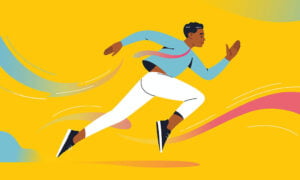
Life without colors would be bleak and dull. A language without colors would be poor and flat. Color up your English skills with some idioms and expressions related to colors. Roses are red, violets are blue, we should start this lesson, so I tell you!
Warm-up: fun facts about colors
As an introduction to the topic, the student decides which of the fun facts about colors are true (e.g. Yellow and red together make you hungry.)
Video: What is color?
The student watches a video about the physics behind colors and answers video comprehension questions.
After that, the student matches the names of colors with the actual colors (e.g. nectarine, poppy red, dusk blue, linen, etc.).
Color idioms
In the main part of the lesson, the student learns about the meanings behind color idioms. We start with the ‘blue’ idioms (e.g. out of the blue, feel blue, etc.), which the student matches with their meanings based on the context.
In the following exercise, all the idioms have one color in common, but it’s left out. The student tries to guess which one it is (black) and then guess the meanings of those idioms (e.g. pitch black, black eye, etc.).
In a matching exercise, ‘green’ idioms are presented (e.g. green with envy, have a green thumb, etc.). The student needs to match the sentence starters with the endings, and then try to guess their meanings from the context.
Colors in some idioms got mixed up, so the student needs to find the mistakes and correct them.
After that, the student reads explanations for five idioms. They need to decide whether the explanations are true or false.
Next, the student fills in the gaps using colors and then tries to answer everyday questions using the idioms they learned.
In another exercise, the student reads a text in which some parts of the ‘red’ idioms are replaced with pictures (e.g. red eye, red herring, etc.). The student tries to decipher them.
Video: What is the Color Code
The student learns about the Color Code Personality Profile by watching the video, and completes the sentences related to colors and motivation.

What Can You Find in a Woman’s Purse?
This Intermediate ESL lesson plan explores the contents of women’s purses…

Civil Unrest
This C2-level lesson uses civil unrest as a thematic framework to…

The Drive to Succeed
This C1 reading practice lesson explores the complex psychology of motivation…


